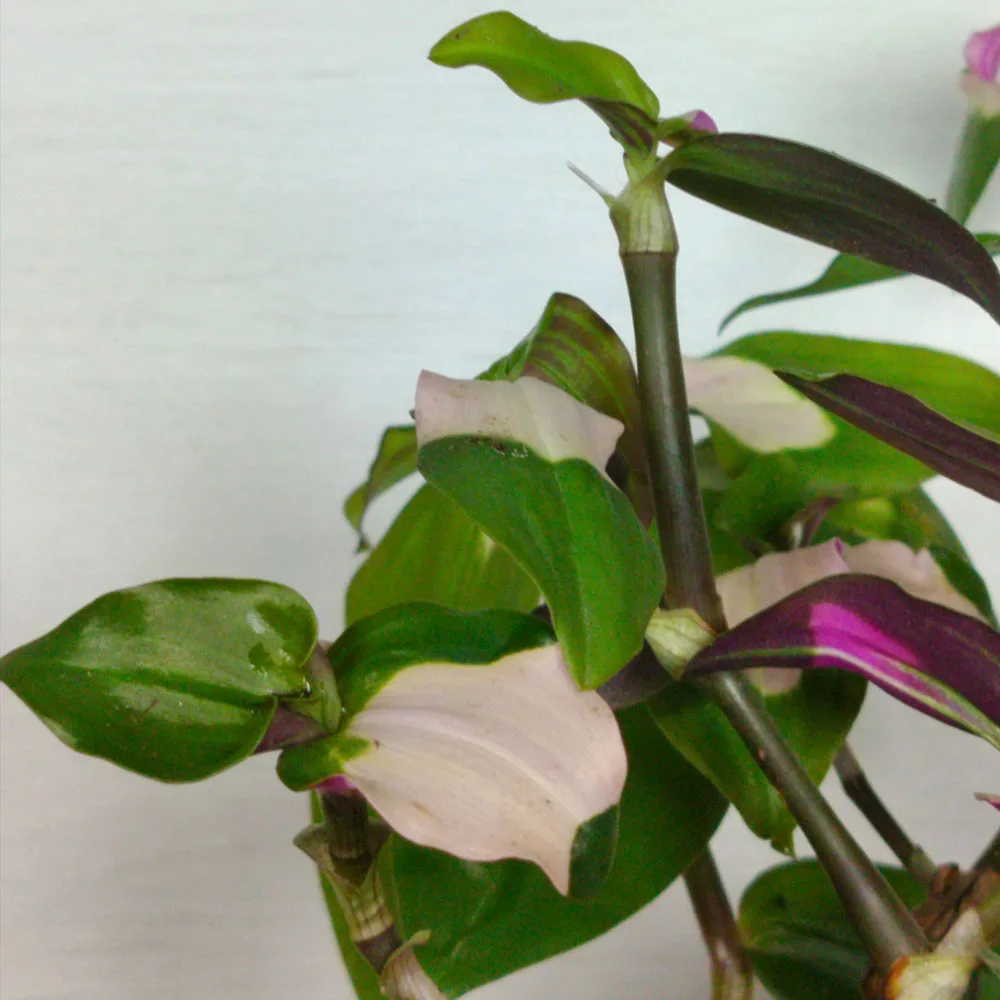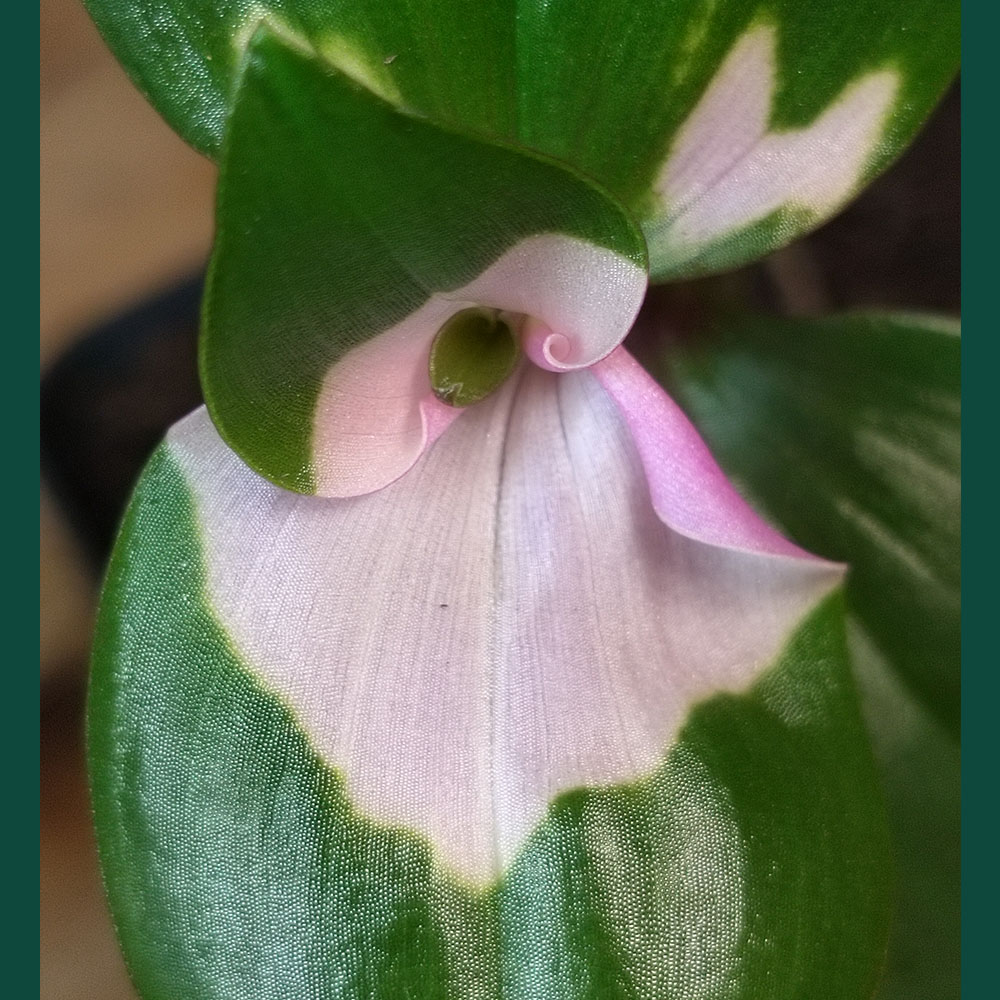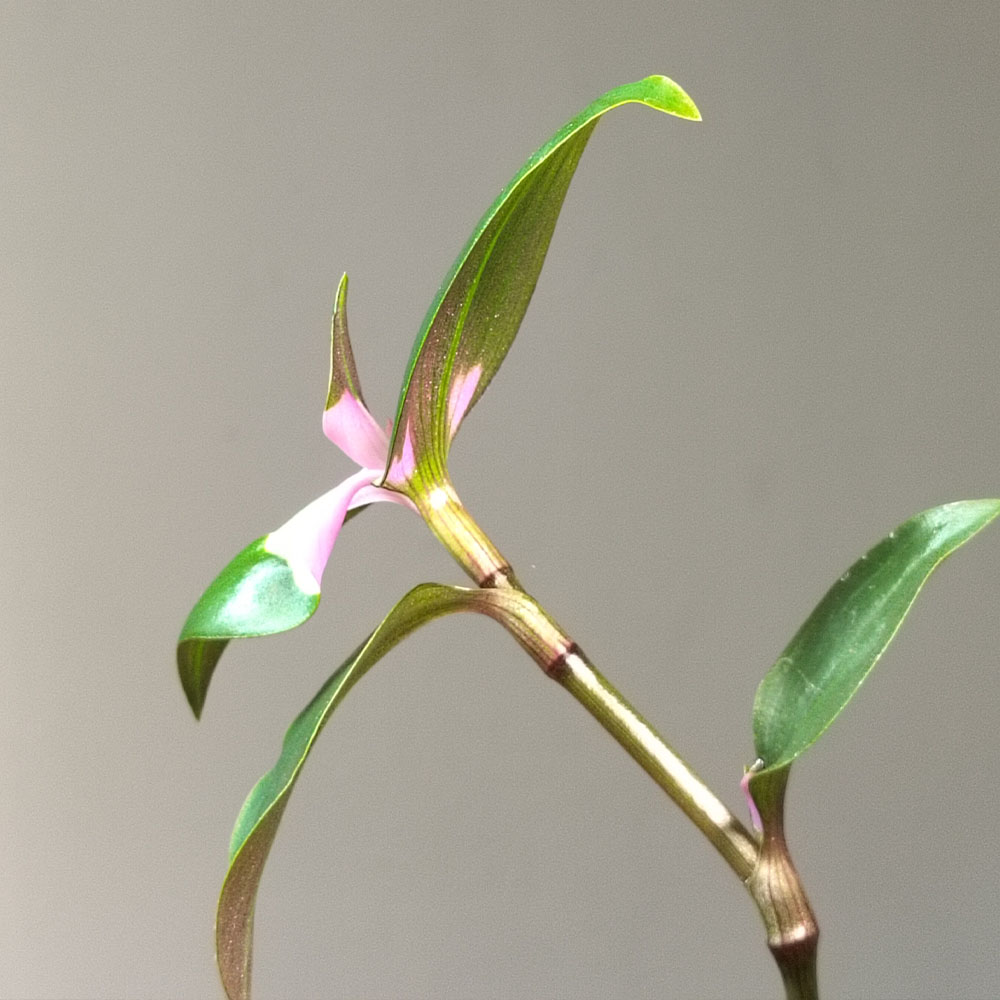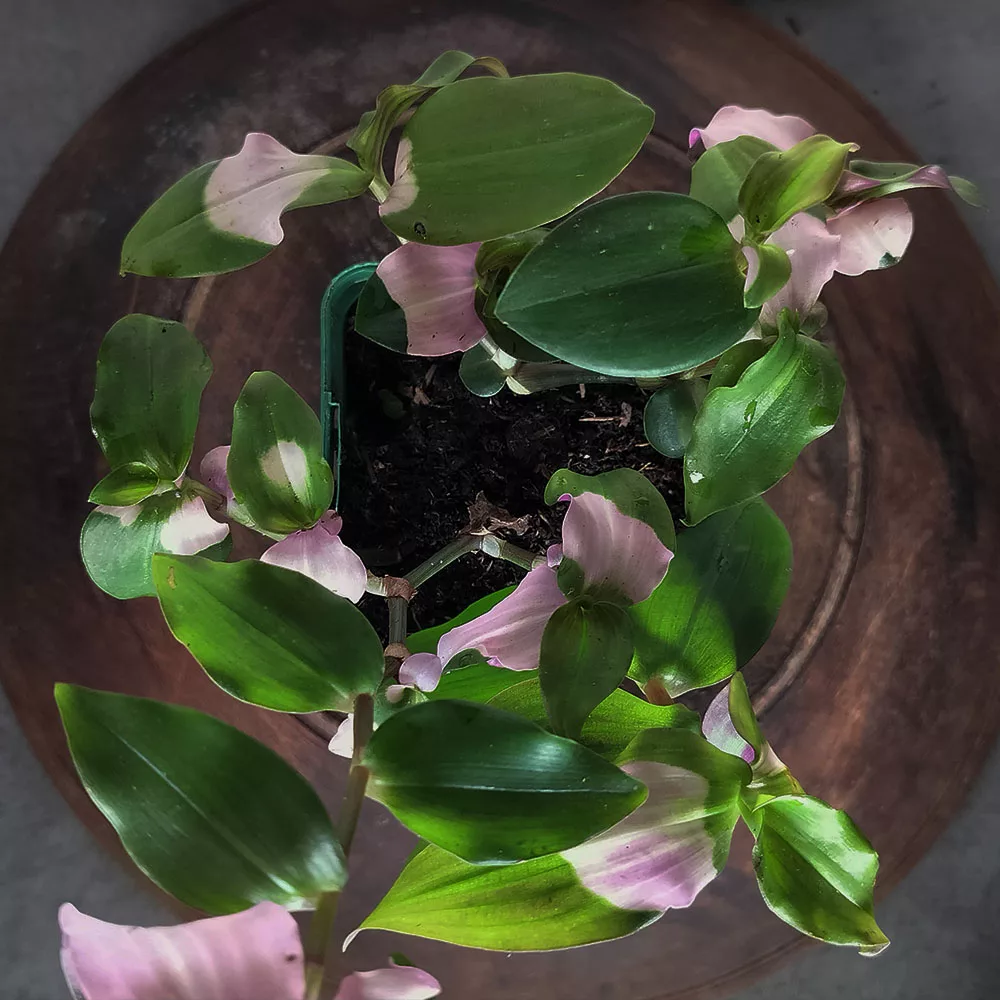No products in the cart.
Tradescantia andersoniana ‘Blushing Bride’
A Tradescantia with gorgeous blushes of pink and white that appear in the coldest nights.
Rated 0 out of 5
0 customer reviews
4,00 € – 8,00 €Price range: 4,00 € through 8,00 €
SKU: pda219
Category: Bees and Butterflies, Better Indoors, Evergreen, Frost Hardy, Ground Cover, Make it Pop, The Stunners

Tradescantia andersoniana 'Blushing Bride'
4,00 € – 8,00 €Price range: 4,00 € through 8,00 €
The Blushing Bride comes from the Tradescantia family, known for their succulent leaves, their drought resistance and their use as bioindicators in many environments.
But this bride has a very particular secret.
Part of the Andersoniana family, she is a particularly cold-hardy Tradescantia.
But be careful now, Tradescantia will still require some protection in the winter – straw, wood chips, pine needles.
For most of the year, our Bride stays green, featuring sturdy, upright stems and a more bushy habit, with large spaces between the leaves.
But once the temperatures begin to drop in the fall, or even on cooler summer nights, the virus that gives this plant its color becomes active, causing gorgeous blushes of pink and white to emerge from fall until spring.
The variegation on the older leaves will shift from pink to white, creating an even more interesting bouquet of colors.
Nota bene: If the temperatures get too high, she may shed all her leaves (in the nude!) – but fear not. If you cut the stems back, the whole plant will regenerate with brighter and healthier leaves.
The Tales:
The family is often called ‘Inchplant’ as the leaves are supposed to be an inch (2.54cm) apart on a healthy plant. It depends on the amount of sunshine she gets, but generally I have found this to be true.
The plant was named after John Tradescant Senior, a gardener employed by the English King Charles I, by his son John Junior, a botanist and explorer.
Origin:
North and South America
Similaire
| Weight | 0,2 kg |
|---|---|
| Container Size | 9×9 cm, 1L |
| Flowering | June, July, August |
| Soil | Well-Draining |
| Exposure | Indirect Sun |
| Frost Tolerance | -5°C to -10°C |
| Size | 0.35m H x 0.4m W |
Reviews
0
Rated 0 out of 5
0 customer reviews
5
0
4
0
3
0
2
0
1
0
Only logged in customers who have purchased this product may leave a review.
Related Products
Artemisia ludoviciana ‘Valerie Finnis’
A semi-evergreen, aromatic variation on the theme of Artemisia.
A semi-evergreen, aromatic variation on the theme of Artemisia.
Rated 0 out of 5
Melissa officinalis
A perennial plant in the mint family that is adored by bees, royal families and tea drinkers.
A perennial plant in the mint family that is adored by bees, royal families and tea drinkers.
Rated 0 out of 5
Hellebore argutifolius
Winter flowering perennial with marbled blue-green leaves
Winter flowering perennial with marbled blue-green leaves
Rated 0 out of 5
Delosperma cooperi
A dwarf perennial known for its vermillion colored flowers
A dwarf perennial known for its vermillion colored flowers
Rated 0 out of 5
Erigeron kavinskianus
A daisy-like carpet of flowers
A daisy-like carpet of flowers
Rated 0 out of 5
Vinca minor
Looping elegance and ability to form a low flowering ground cover
Looping elegance and ability to form a low flowering ground cover
Rated 0 out of 5
Stachys byzantina
Silky white-grey leaves and tall striking flowers
Silky white-grey leaves and tall striking flowers
Rated 0 out of 5
Tanacetum densum subsp. amani
A shrublet composed of soft, finely divided silvery gray-white leaves.
A shrublet composed of soft, finely divided silvery gray-white leaves.
Rated 0 out of 5
Cerastium tomentosum var. columnae
A grey-green spreading ground cover from the mountains.
A grey-green spreading ground cover from the mountains.
Rated 0 out of 5
Euphorbia myrsinites
Known for its draping form of silver-gray foliage and radiant blooms.
Known for its draping form of silver-gray foliage and radiant blooms.
Rated 0 out of 5
Hieracium maculatum ‘Leopard’
A native perennial with blue-green leaves and a tall yellow flower
A native perennial with blue-green leaves and a tall yellow flower
Rated 0 out of 5
Mentha x piperita ‘Chartreuse’
A spicy mint, known for its use in the production of liqueurs and herbal teas.
A spicy mint, known for its use in the production of liqueurs and herbal teas.
Rated 0 out of 5
Glechoma hederacea
A sweet smelling ground cover, producing little blue flowers all summer long.
A sweet smelling ground cover, producing little blue flowers all summer long.
Rated 0 out of 5
Echinacea purpurea
A perennial with purple flowers all summer long
A perennial with purple flowers all summer long
Rated 0 out of 5
Trachelospermum asiaticum ‘Ogon Nishiki’
Jasmine with colorful foliage and lovely white flowers in summer
Jasmine with colorful foliage and lovely white flowers in summer
Rated 0 out of 5
Potentilla anserina
A distinctly silvery, silky and lacy perennial.
A distinctly silvery, silky and lacy perennial.
Rated 0 out of 5
Kalanchoe daigremontiana
A toothy succulent from Madagascar, known as the Mother of Thousands.
A toothy succulent from Madagascar, known as the Mother of Thousands.
Rated 0 out of 5
Euphorbia cyparissias Clarice Howard
A Euphorbia that resembles a soft little cyprus tree
A Euphorbia that resembles a soft little cyprus tree
Rated 0 out of 5
recent view product
Tradescantia andersoniana ‘Blushing Bride’
A Tradescantia with gorgeous blushes of pink and white that appear in the coldest nights.
A Tradescantia with gorgeous blushes of pink and white that appear in the coldest nights.
Rated 0 out of 5
Echium russicum
A self-seeding flower with bright red spikes
A self-seeding flower with bright red spikes
Rated 0 out of 5
Achillea ptarmica “Boule de Neige”
White pompom flowers to attract bees to your garden all summer long.
White pompom flowers to attract bees to your garden all summer long.
Rated 0 out of 5
Glechoma hederacea
A sweet smelling ground cover, producing little blue flowers all summer long.
A sweet smelling ground cover, producing little blue flowers all summer long.
Rated 0 out of 5
Thymus longicaulis ‘Odoratus’
A fast-growing ground cover with strongly aromatic leaves, and bright pink flowers in early summer.
A fast-growing ground cover with strongly aromatic leaves, and bright pink flowers in early summer.
Rated 0 out of 5




















































There are no reviews yet.